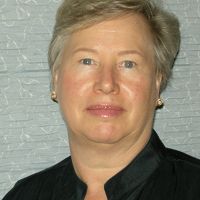Hunsaker, 2011
"Sediment Load Variability, Sediment Sources, and Erosion Rates for Forest Headwater Streams in the Southern Sierra Nevada, California
Hunsaker, C. T. (2011)
National CZO Program 2011 All Hands Meeting
-
Sierra, INVESTIGATOR
Abstract
The ability to quantify best management practices for forests requires quantification of the variability of stream sediment loads for managed and unmanaged forest conditions and their associated sediment sources. Both mechanical thinning and prescribed fire can be used to restore forests in the Sierra Nevada to pre‐fire‐suppression conditions. Although restoration is a positive activity, there are some concerns about short‐term negative effects from soil erosion and sedimentation on stream organisms. Prior to the Kings River Experimental Watershed (KREW), little was known about sediment erosion rates in the southern Sierra Nevada. Five years of research on sediment yield, suspended sediment, and sediment sources on the eight streams in KREW establishes the variability of sediment conditions in the headwaters of the southern Sierra Nevada. These watersheds are conifer‐dominated forest with meadows and granite rock outcrops. Soils originate from granite bedrock and tend to be coarse in texture. A comparison of sediment loads and sources is made among the four watersheds that receive precipitation as both rain and snow and the four watersheds that are snow dominated. Reasons for differences will be discussed. A unique feature is that one of the watersheds has no disturbance from roads or logging and thus serves as an excellent source of data for natural sediment loads under different precipitation conditions. Interestingly this undisturbed watershed does not have the lowest sediment load. The other seven watersheds have had forest management activities on them, and one of these consistently has the highest sediment load which averages eight‐times as much sediment as the others. One of the watersheds, with forest management in the rain and snow zone, produced 1.8, 15.2, and 18.7 kg/ha/yr for water years 2004, 2005, and 2006, respectively. The increase in sediment accumulation correlates with an increase in yearly precipitation: 14.5 cm in 2004, 27.3 cm in 2005, and 31.1 cm in 2006. The snow‐dominated and undisturbed watershed produces similar, and sometimes higher, sediment loads for these same years.
Each stream has a sediment basin that is emptied each fall to measure the annual sediment load from the watershed. The proportion of organic matter and the particle size distribution of the sediment are also measured. Several measurements in the watershed will allow us to estimate the proportion of the sediment load that comes from various sources such as stream banks. Sediment fences provide measurements of the annual erosion from roads and undisturbed upland areas in the watersheds. Turbidity sensors in the streams provide continuous measurements of the suspended sediment moving through the streams; for several of the streams good relationships between turbidity and suspended sediment samples have been developed. KREW also has an intensive upland soil characterization effort.
The Critical Zone Observatory Program provides a collaborative opportunity to broaden the usefulness of the Forest Service sediment data. New collaborative work includes looking at black carbon in both upland soils and sediment, long‐term soil erosion rates, and soil development mechanisms.
Citation
Hunsaker, C. T. (2011): "Sediment Load Variability, Sediment Sources, and Erosion Rates for Forest Headwater Streams in the Southern Sierra Nevada, California. National CZO Program 2011 All Hands Meeting.
 This Paper/Book acknowledges NSF CZO grant support.
This Paper/Book acknowledges NSF CZO grant support.
Explore Further

